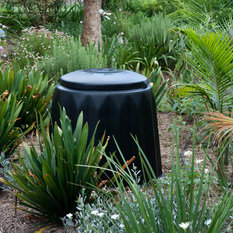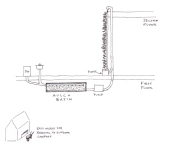
 6
6









 2
2




Iterations are fine, we don't have to be perfect
My 2nd Location:Florida HardinessZone:10 AHS:10 GDD:8500 Rainfall:2in/mth winter, 8in/mth summer, Soil:Sand pH8 Flat
 4
4














Iterations are fine, we don't have to be perfect
My 2nd Location:Florida HardinessZone:10 AHS:10 GDD:8500 Rainfall:2in/mth winter, 8in/mth summer, Soil:Sand pH8 Flat
 1
1




The holy trinity of wholesomeness: Fred Rogers - be kind to others; Steve Irwin - be kind to animals; Bob Ross - be kind to yourself


 2
2




Iterations are fine, we don't have to be perfect
My 2nd Location:Florida HardinessZone:10 AHS:10 GDD:8500 Rainfall:2in/mth winter, 8in/mth summer, Soil:Sand pH8 Flat
 3
3




 2
2




Mark Tudor wrote:How long is the water aerated in your system? Is there a minimum time needed to kill the bacteria? Could you describe the path the blackwater is taking, starting at say the toilet or sink, until it's being used in the landscape? I was curious what the steps are, in comparison to say an earthship.
One of my future goals is taking my graywater from all sources (composting toilet not included) and irrigating greenhouse plants before sending the water out to fruit trees at the other end. So I'm curious about any extra steps that may be needed, beyond having a screen in my kitchen sink drain to catch food particles. Since you're including a flush toilet your situation is different of course, but knowing what is helpful without using too much electricity (as I'll be off grid) would be great. Thanks!


 1
1




Iterations are fine, we don't have to be perfect
My 2nd Location:Florida HardinessZone:10 AHS:10 GDD:8500 Rainfall:2in/mth winter, 8in/mth summer, Soil:Sand pH8 Flat
 3
3




S Bengi wrote:Greg, I have to admit I am impressed by the scale and setup of your operation.
Greywater to Toilet to Humanure (Fertilizer) + Pond Water ( For Fish Production and Irrigation, maybe you even use it for your chickens/egg too)
Although I am a bit squeamish coming to your house and getting infested with your specific strain of gut microbiome and parasites.
If it was my own microbiome that I am already infected with, then it wouldn't make much of a difference.
I would give you an apple even though I am still abit squeamish.
If a lab test was to show that your compost and water was 'okay' I would recommend this to everyone.
And even if the blackwater side is a no go, I think that what you have is perfect for a grey water setup.









Iterations are fine, we don't have to be perfect
My 2nd Location:Florida HardinessZone:10 AHS:10 GDD:8500 Rainfall:2in/mth winter, 8in/mth summer, Soil:Sand pH8 Flat
 1
1




S Bengi wrote:My only concern is actually putting my hand in a bucket of that water without any sanitation.
 1
1




S Bengi wrote:A regular anaerobic drainfield just put the water back into the landscape with no special anything. So not much of a difference.






Iterations are fine, we don't have to be perfect
My 2nd Location:Florida HardinessZone:10 AHS:10 GDD:8500 Rainfall:2in/mth winter, 8in/mth summer, Soil:Sand pH8 Flat




Living a life that requires no vacation.
 1
1




Stacy Witscher wrote:Greg Mamishian - just curious, why did you decide to include toilet water instead of using a humanure system or an incinerating toilet. I'm planning to build a home for myself in the next year or so and thinking about ways to deal the greywater, toilet etc. Your system interests me.



 1
1




S Bengi wrote:My other questions still stand though, what is your 20inch filter made from?, etc, etc






 1
1




Russ Manning wrote:Hi Greg, looks like an awesome system. Thanks so much for your sharing, can you tell us how long do you keep the water in each of the tanks? I read how does that work for the first tank as there is always new deposits going in. Do you notice any smells from the system?

We live in the tropics and most people just have a septic tank, then heavy rains come and things get mixed up!! So looking for solutions that we can bring to the local population whom are basically poor with limited financial resources and then hotels whom have more resources, your system looks ideal for the latter



|
CLUCK LIKE A CHICKEN! Now look at this tiny ad:
Play Your Way to a Sustainable Lifestyle: Uncover Permaculture Principles with Each Card
https://gardener-gift.com/
|







